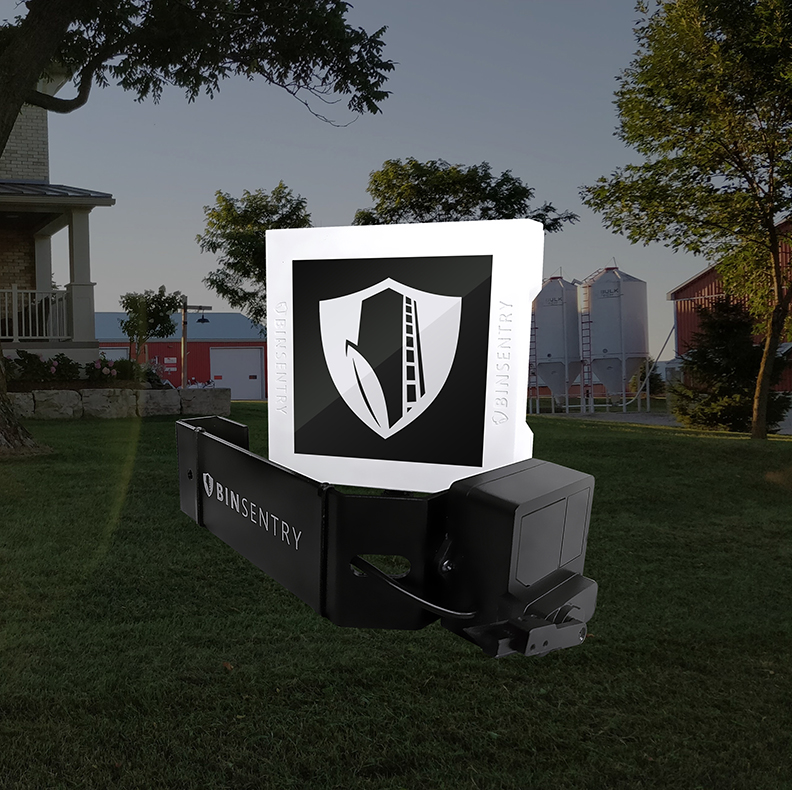BinSentry provides proprietary solutions to monitor feedstock inventory, ensuring livestock farmers have a reliable, uninterruptible supply of feed for their animals. The agriculture IoT startup has developed a connected solution that addresses the need for farmers and feed mills to monitor feed inventories on farms, replenish supplies in a timely manner, and schedule efficient trucking routes to eliminate supply disruptions and reduce costs.
Business Challenge
On livestock farms across the country, farmers must constantly provide their stock with the optimal mix of feed, which means it is critical to create a steady inventory and a smooth supply chain. Feed mills – supplying tons of feedstocks each day to hundreds of farms – must rely on farmers to manually check grain bins and report when they need to be replenished. But that doesn’t happen for every bin on every farm. And even slight disruptions caused by shortages that delay feeding by even a few hours can result in significant livestock losses.
As a result, unanticipated stockouts leave feed mills scrambling to respond with rush orders, revamped production schedules and inefficient truck routing. According to Randall Schwartzentruber, Co-founder and Chief Executive Officer of BinSentry, the industry can’t afford to continue to operate in a reactive mode. “The feed mills are always waiting for farmers to check the feed bins and submit inventory statuses so that they can create production and transportation schedules,” he said. “But delayed or inaccurate data can wreak havoc on those plans. We talked to different feed mill operators and asked them, ‘Suppose you had a sensor to tell you when there is only 25 percent of inventory remaining in a bin. Would that be helpful?’ We learned that this is a universal problem that no one has solved, but that would be very desirable to deploy. In our research, we couldn’t find a solution provider, so we determined that a network of low-cost, Internet-connected, energy-efficient sensors could transform a mundane task with automation and accuracy.
Solution
After extensive prototyping, field testing, and feedback from feed mills, sales people, and transportation experts, BinSentry developed its flagship commercial solution that monitors feed bins in real time to provide suppliers with accurate and actionable data on inventory status, consumption rates, and more. “We learned that you can’t use an ultrasonic sensor because dust, humidity, and oils interfere with readings. And it’s not as simple as using an off-the-shelf laser sensor. We chose a sensor that uses LIDAR – the same technology used in self-driving autonomous vehicles. It shoots a beam of light and we calculate the depth of feed left in the bin.

Outside, the bin, BinSentry uses a circuit board and communication module to perform local calculations and transmit the data. The connectivity is handled by the Digi XBee® 3 LTE cellular modem. Digi XBee 3 modules accelerate time to market by quickly enabling wireless connectivity to a range of products and applications in precision agriculture. Digi XBee 3 modules can switch between multiple frequencies and wireless protocols, as needed, and can be easily configured and controlled from a simple, central platform. Digi XBee modules offer size, weight, power and performance advantages ideal for scalable device connectivity.
Using Digi XBee 3, BinSentry offers the world’s first battery-operated, solar-powered feedbin monitor. It can be installed in 15 minutes, with no modifications to the feedbin and no need for separate power or Internet connectivity.
“We love Digi XBee modules because they’re so versatile,” said Schwartzentruber. “Instead of soldering, which is expensive and time-consuming to change, Digi modules are plug-compatible with the same footprint. When we expand to different areas that have different cellular networks, we can adapt very quickly. Digi lets us swap between NB-IoT and LTE, for instance. That’s huge for us.”
Results
With BinSentry, feedmills can see the exact level of inventory in any bin, as well as consumption trends, days to empty, and other metrics. The sensor “wakes” to send data every four hours – a small, low-power event that lasts one minute.
“Since most feed mills were previously getting feed data once a week, this represents a significant improvement,” Schwartzentruber said. “We can send data and diagnostics from the device six times a day, and even if there’s a total power solar-cell failure, there’s 90 days of backup battery power.”
From a cost perspective, BinSentry offers a compelling value proposition. “We can help feed mills save on transportation, raw materials, and labor while improving customer satisfaction,” Schwartzentruber explained. “We’ve found our implementation delivers a 2-3x payback per year. And customers don’t pay for cellular data usage. That’s included in our price. With feed mills servicing tens of thousands of bins, and a device with an expected life of five years, we’re offering a very attractive return.”